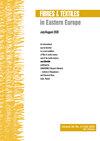Surface Treatments of Natural Fibres in Fibre Reinforced Composites: A Review
IF 0.9
4区 工程技术
Q3 MATERIALS SCIENCE, TEXTILES
引用次数: 2
Abstract
Abstract The use of natural fibres in fibre-reinforced composites comes with drawbacks. They are highly hydrophilic, leading to high moisture absorption and poor interfacial adhesion in matrix-reinforcement bonds. This affects the fibres’ thermal stability as well as mechanical properties, hence limiting their wider application. This paper reviewed different ways in which natural fibres have been treated to improve hydrophobicity, reinforcement-matrix interfacial adhesion and thermal stability. It will investigate. among others, treatments like alkali, acetylation, bleaching, silane, benzoylation and plasma, which have been found to improve fibre hydrophobicity. The literature reviewed showed that these methods work to improve mechanical, chemical, and morphological properties of natural fibres by removing the amorphous surface, thus allowing for more efficient load transfer on the fibre-matrix surface. Studies in the literature found alkali treatment to be the most common surface modification treatment due to its simplicity and effectiveness. However, plasma treatment has emerged due to its lower processing time and chemical consumption. A comparative analysis of other improved properties was also investigated.纤维增强复合材料中天然纤维的表面处理研究进展
在纤维增强复合材料中使用天然纤维有其缺点。它们是高度亲水的,导致高吸湿性和在基体-增强键中的界面附着力差。这影响了纤维的热稳定性和机械性能,从而限制了其更广泛的应用。本文综述了天然纤维在提高疏水性、增强剂-基体界面附着力和热稳定性方面的不同处理方法。它将进行调查。其中,碱、乙酰化、漂白、硅烷、苯甲酰化和等离子体等处理已被发现可以改善纤维的疏水性。文献综述表明,这些方法通过去除非晶态表面来改善天然纤维的机械、化学和形态特性,从而使纤维基质表面的负载传递更有效。文献研究发现碱处理是最常见的表面改性处理,因为它简单有效。然而,等离子体处理由于其较低的处理时间和化学消耗而出现。对其他改进后的性能也进行了对比分析。
本文章由计算机程序翻译,如有差异,请以英文原文为准。
求助全文
约1分钟内获得全文
求助全文
来源期刊

Fibres & Textiles in Eastern Europe
工程技术-材料科学:纺织
CiteScore
1.60
自引率
11.10%
发文量
12
审稿时长
13.5 months
期刊介绍:
FIBRES & TEXTILES in Eastern Europe is a peer reviewed bimonthly scientific journal devoted to current problems of fibre, textile and fibrous products’ science as well as general economic problems of textile industry worldwide. The content of the journal is available online as free open access.
FIBRES & TEXTILES in Eastern Europe constitutes a forum for the exchange of information and the establishment of mutual contact for cooperation between scientific centres, as well as between science and industry.
 求助内容:
求助内容: 应助结果提醒方式:
应助结果提醒方式:


